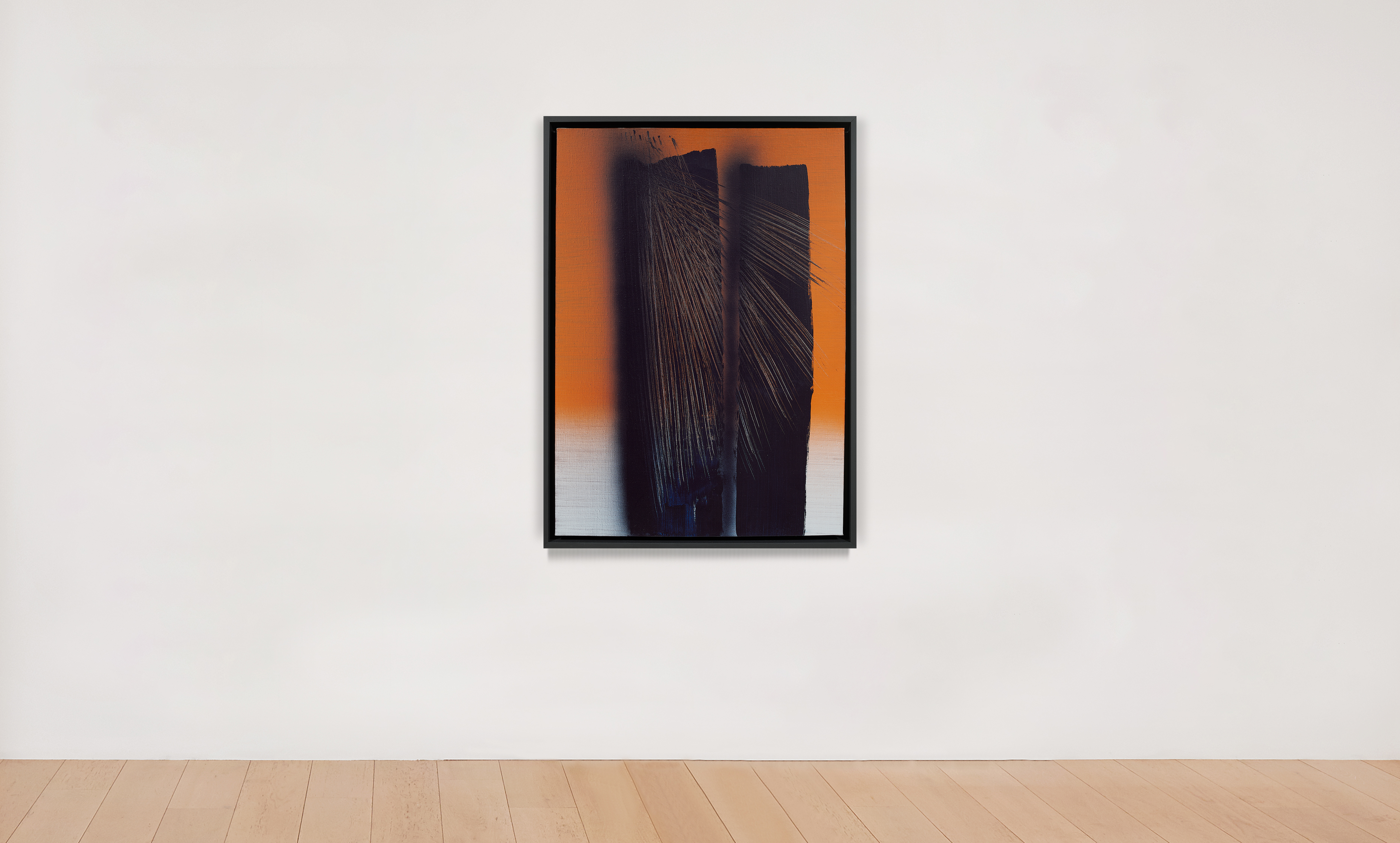Hans HARTUNG
T1966-R29, 1966
Vinyl paint and scratching on canvas
92 x 65 cm | 36 3/16 x 25 9/16 inches
Certificate of Authenticity established by Fondation Hartung – Bergman
A pillar of Lyrical Abstraction, Hans Hartung revolutionized modern art thanks to his distinctive gestural style. He balances between impulsivity and control to compose his transcending works.
In T1966-R29, Hartung presents his most recognizable techniques, such as his scratchings and acrylic and vinyl paint applied by aerosol.
Defending abstraction until his last days, his production of the 60s remains one of the artist’s particularly emblematic period.
Hans HARTUNG
T1966-R29, 1966
Vinyl paint and scratching on canvas
92 x 65 cm | 36 3/16 x 25 9/16 inches
Certificate of Authenticity established by Fondation Hartung – Bergman
Obtaining the Grand Prize at the Venice Biennale in 1960 heralds an eminent decade for Hans Hartung. Rewarded for his innovative abstraction, the artist throws himself in a new pursuit with the introduction of vinyl paint.
Thanks to the much shorter drying time, Hartung manages to push even further the speed and precision of his hand. He reshaped his methodology and created the gesture that would punctuate the works of this period. By superimposing homogeneous light-colored vinyl and a thick darker colored layer, Hartung repeatedly scratched the surface to develop his luminous slits.
He thus reclaims his own body in a committed, powerful and sincere gesture. A true testament to the exaltation of Hartung’s movement, T1966-R29 engages the viewer to join the artist in his freedom.

Hans Hartung in the Antibes workshop
“It makes me happy to act upon a canvas. It is this desire that drives me: the desire to leave the mark of my gesture. It is the act of painting, drawing, scratching, grating!”
Hans Hartung, 1951, in an interview with Charles Estienne
Hans Hartung, T1966-R29 details, Vinyl paint and scratching on canvas, Galerie A&R Fleury, Paris
The fluorescent emergence, caused by the gesture of scratching, is reinforced by the color scheme. T1966-R29 opposes orange and blue, colors which in their complementarity naturally generate light. However, Hartung challenges this chromatic technique by obstructing the field of vision with two black columns. They dominate the composition, stretching and encompassing the central part of the painting. So deep, this charcoal pigment has bluish reflections, the only indication that the artist did not wait for the background to dry completely before applying his second coat.
Behind the domination of the two pilasters, Hans Hartung confronts us with the irruption of intense colors. By the force of his unpredictable gesture, he extracts the orange and the blue. In opposition, they tangled and mix yet never lose their purity. Hartung cracks the dark cosmos with his radiant furrows and sporadically lets the white of his canvas shine through. A dazzling luminosity then invites itself onto the painting. It is reinforced by this chiaroscuro contrast mastered by Hartung.
The preparation of canvas and background for Hartung is a crucial first step in his process. It is these unfinished canvases that arouse a fascination in Mark Rothko during a visit to his studio in Paris. This decisive meeting in 1950 will have an impact on the work of these two masters of abstraction. For Hans Hartung, he incorporated new tools to bring vaporous details to his canvases. Thanks to the compressed air pistol and the aerosol, Hartung executed his gradient backgrounds and hazy strokes.
Intrigued by the optical effects of transparencies and perspective produced by glaze, or sfumato, Hartung brought a touch of modernity to this ancient painting technique practiced by many artists such as Leonardo da Vinci, Titian, Caravaggio… A color seen through another — Hartung took up these foundations while innovating their use to produce its effect of depth. In T1966-R29, the fine vinyl particles, delicate and translucent, reveal the underpinnings of the composition and simulate the effects of shadows.
« Make sure that your shadows and lights blend together without features or lines, like smoke. »
Leonardo da Vinci, Treatise on painting, 1651

Hans Hartung, T1966-R29, In Situ, Vinyl paint and scratching on canvas, Galerie A&R Fleury, Paris.
« Hartung is the only one who currently deserves the title of great painter. » said Post-War art critic Jean-José Marchand. It was on the occasion of the famous exhibition « H.W.P.S.M.T.B » (Hartung, Wols, Picabia, Stahly, Mathieu, Tapié, Bryen) at the Colette Allendy gallery in 1948, that this declaration was published. This title of great painter is not insignificant. Indeed, thanks to his temerity and ingenuity, Hans Hartung became, in the continuity of Art History, one of the exceptional painters who have contributed to the modernization and advancement of abstraction.
« Mondrian, not even Kandinsky, nor Magnelli, were so quickly and so naturally abstract […] it happens, I say, that this gesture or these solitary gestures express the man so well that they also express the artist; that not only are they his style, but they are also a style, that of the pure expressive. And this style today takes on an exemplary value for all painters to whom abstraction appears to be the only primordial way of salvation. »
Charles Estienne in Art d’aujourd’hui, March 1951